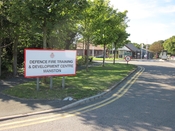Human resources are the people that work for an organisation, and Human Resource Management is concerned with how these people are managed. However, the term Human Resource Management has come to mean more because people are different from the other resources that work for an organisation. People have thoughts and feelings, aspirations and needs. The term HRM has thus come to refer to an approach, which takes into account both:
1. The needs of the organisation
2. The needs of its people.
Different individuals have different needs and aspirations. HRM therefore involves finding out about the needs and aspirations of individual employees, for example through the appraisal process and then creating the opportunities within the organisation for employees to improve themselves.
HRM relates to every aspect of the way in which the organisation interacts with its people, for example by providing training and development opportunities, appraisal to find out about individual needs, training and development needs.
Training opportunities and courses for individuals to develop skills, knowledge and attitudes, that help the organisation to achieve its objectives. Development to provide opportunities and courses for individuals to develop skills, knowledge and attitudes that help themselves to achieve personal objectives
The objective of training and development is to enable employees to acquire the knowledge, skills, abilities and attitudes necessary to enable them to improve their performance. Staff training and development should focus on the department's objectives and goals and staff's competencies in achieving them. A strategic approach has the following characteristics:
* Commitment to training and developing people;
* Regular analysis of operational requirements and staff competencies;
* Linking training and development to departmental goals and objectives;
* Skilled training personnel;
* Regular evaluation;
* A continuous learning culture;
* Joint responsibility between managers and staff for identifying and meeting training needs; and...



Zain
this essay helped me
1 out of 1 people found this comment useful.